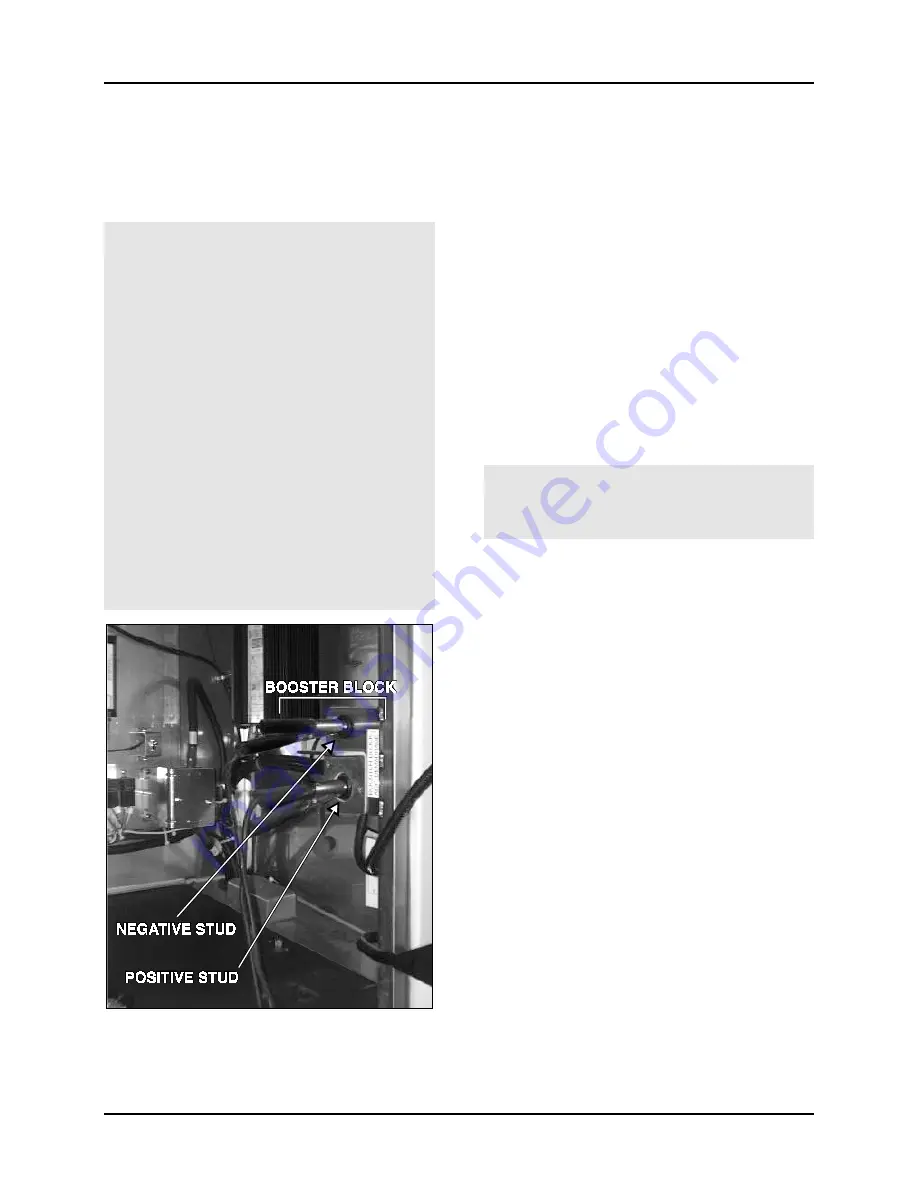
STARTING AND STOPPING PROCEDURE
4 - 12
Jump Starting
Whenever it becomes necessary to start the en-
gine while batteries are discharged, use another
power source of the same voltage (24 volts DC),
negative grounded and proper jumper cables.
Warning:
Procedures other than those outlined
could cause injury or damage from battery acid
spray, explosion, or charging system overload.
Never connect to the negative post of the dis-
charged battery.
Never allow the two vehicles or the jumper cable
clamps to touch each other.
Never attempt to jump start a vehicle if the dis-
charged battery fluid is frozen or if the battery
fluid level is low, as the battery may rupture or
explode.
Do not jump start vehicles equipped with mainte-
nance-free batteries if the test indicator is light
yellow.
Turn off all lights, heaters and other electrical
accessories. Make sure the parking brake is ap-
plied and the transmission is set to
Neutral
be-
fore attempting to jump start the engine.
Wear eye protection and remove rings, watches
with metal bands and other metal jewelry.
1. Remove the protective caps from the booster
block posts, located in main power compart-
ment.
2. Connect one end of the red jumper cable to
the positive (+) post of the booster power
source.
3. Connect the other end of the red jumper cable
to the positive (+) post of booster block.
4. Connect one end of the black jumper cable to
the negative (-) post of the booster power
source.
5. Connect the other end of the black jumper
cable to the negative (-) post of booster block.
6. Start the engine in the vehicle that is providing
the jump start. Let the engine run for a few
minutes, then start the engine on the vehicle
that has the discharged batteries.
Warning:
Do not engage starter for more than
15 seconds. Allow starter time to cool before en-
gaging again. This will prevent starter from over-
heating and will allow time delay relay to cool.
7. To remove the cables, perform the above pro-
cedure in reverse order, then replace the pro-
tective caps on booster block posts.
Note:
Jumper cables must withstand 500
cranking amperes. If cable length is 20 feet (6 m)
or less, use 2/0 (AWG) gauge wires. If cable
length is between 20-30 feet (6-9 m), use 3/0
(AWG) gauge wires.
Note:
If, after doing this procedure, starter turns
but engine still doesn't run; (with jumper cables in
place) wait approximately 15 minutes (to give
battery equalizers time to balance 12V and 24V
charges), then try again. If engine still doesn't
run, repeat procedure once again.






























